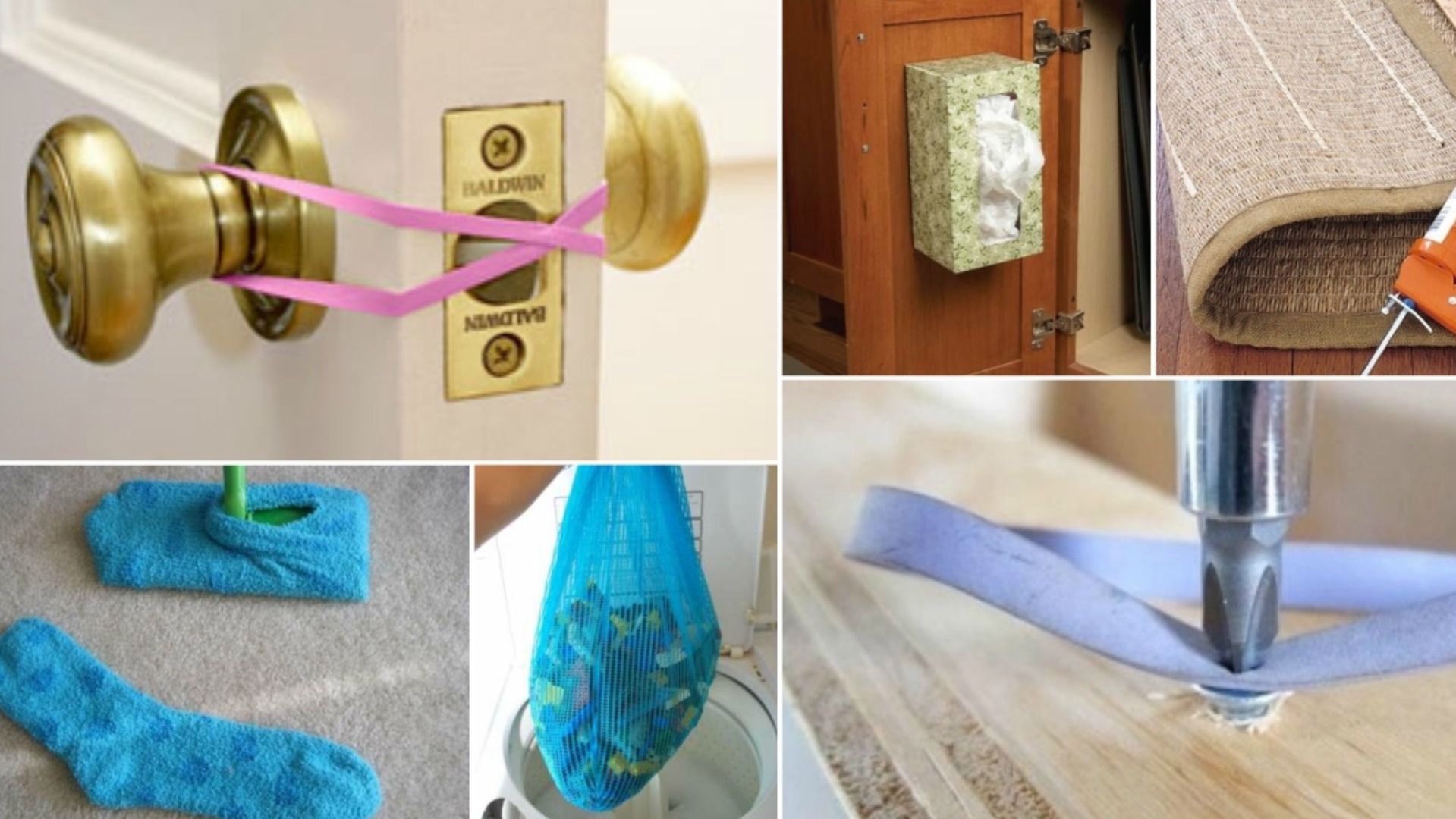If you’re dealing with a broken window, a leaky pipe, or any other home repair issue and don’t know where to start, you’re not alone. Many have faced this dilemma. The DIY community has always been a valuable resource for advice and tips to help people carry out home repairs independently. Over time, we’ve acquired new skills that make these tasks easier, quicker, or more efficient. In this blog post, we share 50 tricks for homeowners of all experience levels to use when addressing household repairs.
Use Superglue to Secure Screws
I’m here to help you by rephrasing any text you provide. Please let me know what you’d like rephrased!
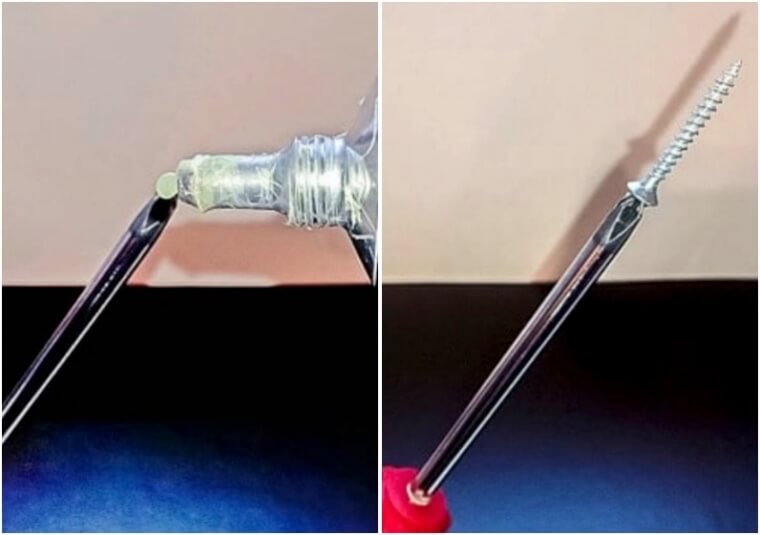
Many people struggle with installing simple screws because they tend to slip, roll, or fall off. This task becomes even more difficult when screws need to be installed at an angle. This is where a clever superglue home repair trick can be useful.
Simply get some rubber glue, apply it to the tip of the screwdriver, and you won’t have issues with screws slipping anymore. This is one of the simplest hacks to prevent screws from slipping out of the drill. After applying this method, you can proceed with your installation, saving both time and effort.
Toothpaste Can Easily Fill Nail Holes
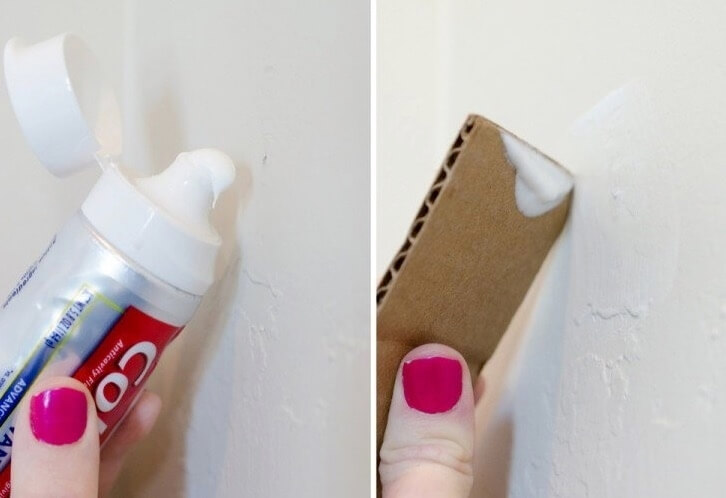
When people vacate a location, they usually take their items, including pictures, art, and frames from the walls. When you move into the same place, you may notice numerous holes in the walls as a result. There is a simple home repair trick to address this issue.
You can easily use some toothpaste to fill those holes. It’s important to ensure the toothpaste is white so it matches your white wall color, otherwise, it won’t blend in. You can also use this trick before you leave a place to help ensure you don’t forfeit your security deposit.
Use Coffee Grounds to Revitalize Wood Furniture
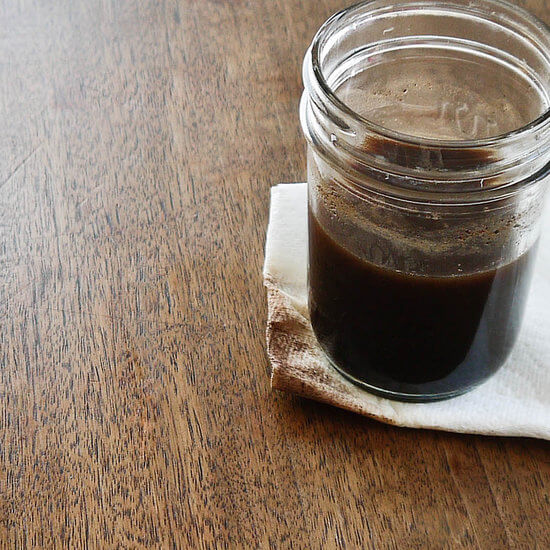
Our furniture sets the mood we desire in our home, so it is important to maintain it. We’ve all had accidents with spills on our furniture. Some stains may be tough to remove, but for unfinished wood furniture, coffee grounds can be used.
Applying coffee grounds to the damaged area can restore the furniture’s appearance quickly. The coffee grounds provide a brown tint that blends with the furniture, eliminating the need to repaint it.
An Incredibly Easy Method to Safeguard Your Fingers While Using a Hammer
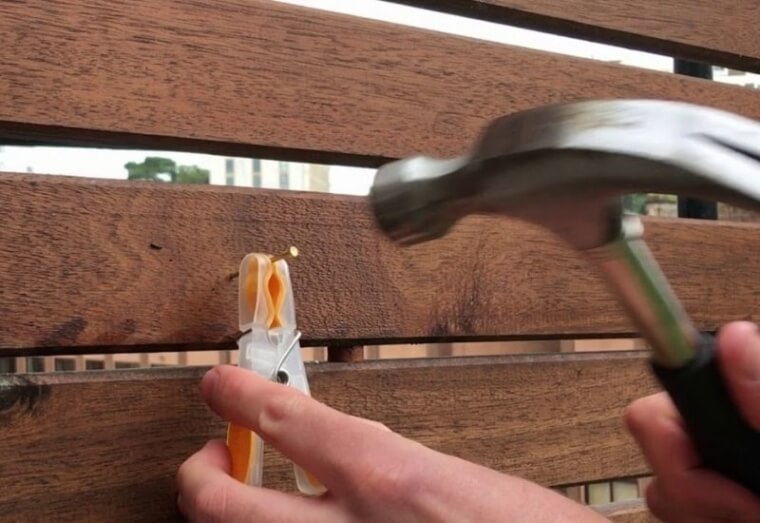
Are you afraid of hitting your fingers instead of nails while hammering? If so, we have the ideal home repair tip for you that will simplify your life. This trick will let you hammer anything safely without risking injury.
For this tip, you can use bobby pins, clothespins, or similar items. For instance, if you choose a clothespin, you can hold the nail between the pin and start hammering. This will protect your fingers and ensure you stay safe during the nailing and hammering process.
Soak the tiles before cutting them.
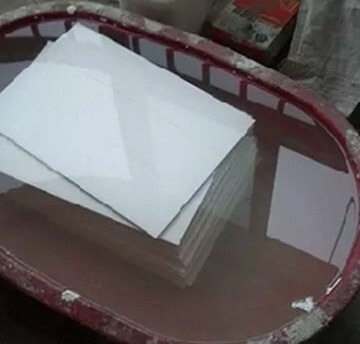
If you plan to cut tiles soon, this home repair tip will simplify the task quickly. It will save you time, effort, and money in the long term as you can do it easily at home. Start by making a rivet or pre-cut in the tiles.
Then, measure what you need and begin cutting. Once finished, soak the tiles in warm water for a few hours. Afterward, it will be easy to break the tiles with minimal effort.
I don’t see any text to rephrase. Could you please provide the text you would like me to rephrase?
Soap Can Easily Silence Wooden Drawers
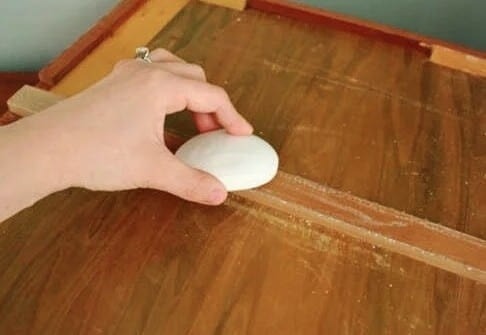
Do you have creaky and noisy wooden drawers in your home and aren’t sure how to fix them? If so, this home repair tip could be perfect for you. Soap is a great item that can silence your noisy wooden drawers for good.
You can use either a bar of soap or liquid soap, as both will work effectively on the drawers. Rub the soap along the rails of the problematic wooden drawers for a few minutes, and you’ll notice a difference very soon. If the noise returns, you can repeat the process.
Of course! Please provide the text you would like rephrased, and I’ll be happy to assist.
Struggling With Removing Old Stickers? Use A Blow Dryer!
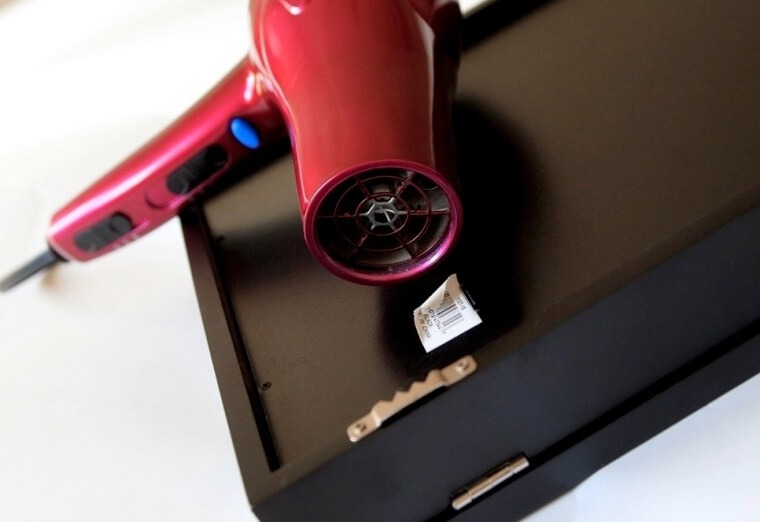
Newly purchased and packaged items often have stickers, which can be bothersome if you want your items to maintain a clean and polished appearance. Trying to remove the stickers by hand can lead to damage from leftover adhesive. That’s why we have a top home repair tip for you.
To remove stickers, simply use a blow dryer to heat the sticker, making it easy to peel off. The heat will weaken the adhesive, allowing you to remove the sticker smoothly. Your items will look brand new once you’re finished.
Of course! Just provide the text you would like rephrased, and I’ll be happy to help.
Vinegar Can Revitalize Shower-Heads
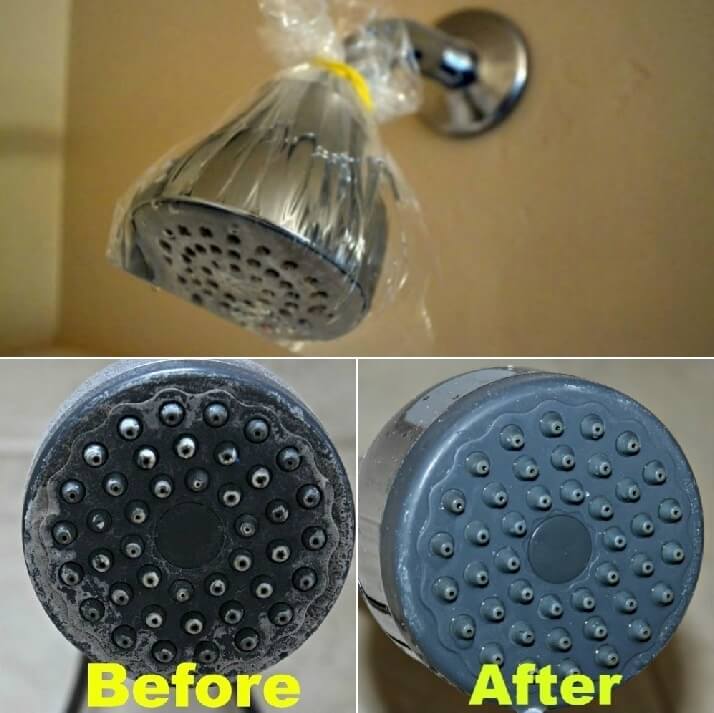
Showerheads can develop calcification over time, causing the water flow to slow down. If you dislike slow-flowing showerheads, vinegar can help. It might seem unusual initially, but this trick is very effective. Simply take a plastic bag and a bottle of vinegar, fill the bag halfway with vinegar, secure it around your showerhead, and leave it overnight. In the morning, you’ll find that the water flow has significantly improved.
It seems like you haven’t provided any text for rephrasing. Could you please provide the text you’d like me to rephrase?
Use Baby Powder to Finally Silence Those Noisy Floorboards
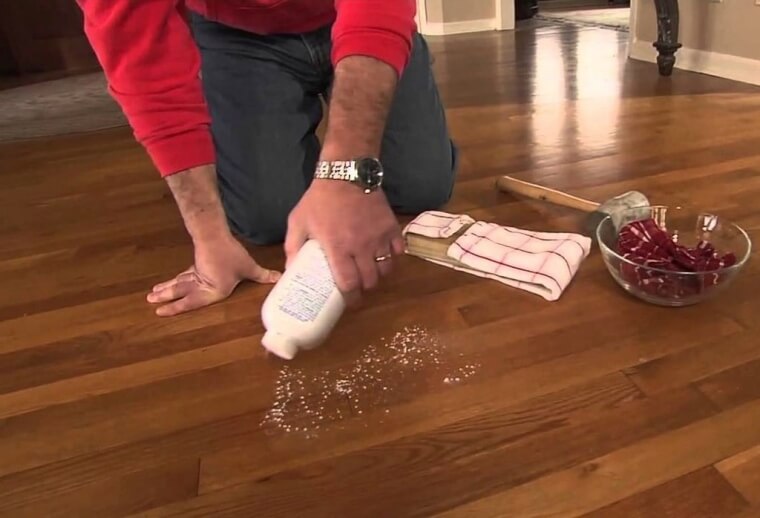
Hardwood floors can often be noisy and creak, particularly if they have been installed for a long period. Luckily, using some baby powder can help resolve this issue and quiet the floorboards quickly. If you’re encountering this noise problem, simply get a bottle of baby powder.
After obtaining the powder, sprinkle it between the floorboards, as it’s where the wood tends to rub and cause noise. Ensure that all the gaps are filled with baby powder, and you’ll no longer have to deal with those noisy floorboards. It’s a simple and quick solution.
Use soap to assist in inserting screws into holes.
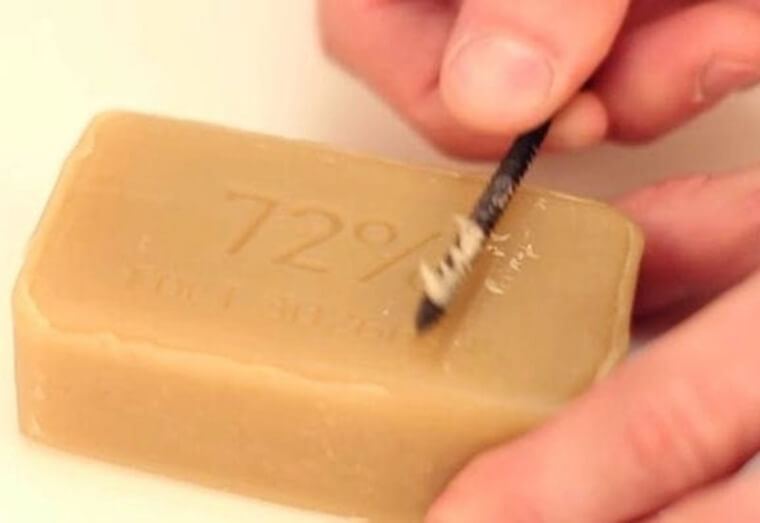
Have you ever encountered a screw that’s too resistant to go into a wall? If so, you know how frustrating and difficult it can be. However, you can easily solve this issue by using some soap to help the screws go into the holes.
Take a bar of soap you have at home and rub the screw on it. Be sure to cover all sides of the screw with the soap, as it works like a lubricant. Once all the sides have been coated with soap, try inserting the screw again, and it will slide in effortlessly.
Using Tape Can Simplify Hanging Predrilled Frames
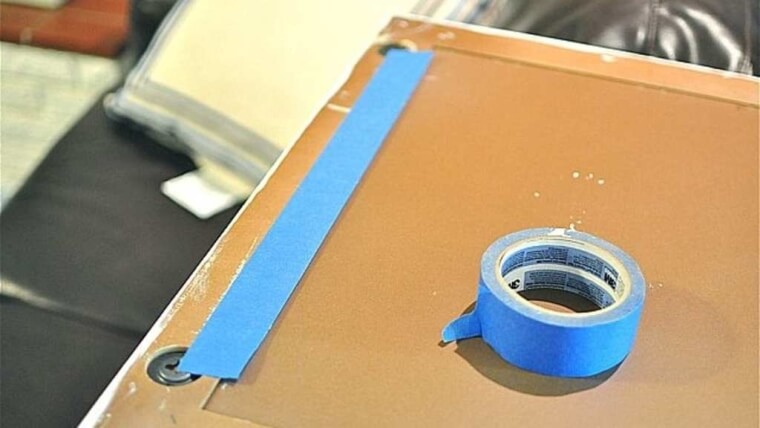
Although many people don’t typically use predrilled frames, there are exceptions to the rule. If you’re looking for an easy method to frame your pictures using predrilled frames, this trick is perfect for you. It will help you position the nails perfectly for optimal use.
Use masking tape or artist’s tape to mark the hole placements. Then simply stick the tape on the wall to see where to position each nail. This approach will save you time and effort when it comes to hammering in the nails.
Please provide the text you would like to have rephrased, and I will assist you with it.
Use Your Microwave to Refresh Tape That Is Not-So-Sticky
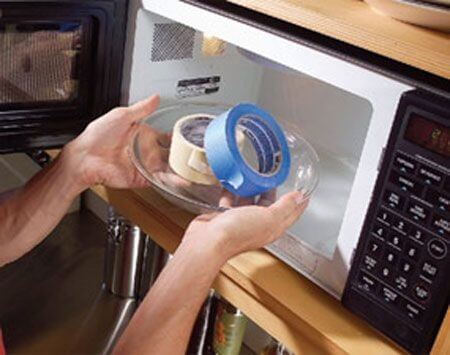
If you’ve ever dealt with tape that has lost its adhesive quality, you know how frustrating it can be to use. It’s normal for tape to lose its stickiness over time. However, there’s a method to restore its stickiness. You can heat the tape in your microwave for a few seconds. This will warm the tape slightly and help bring back its stickiness. After this trick, the tape will be as sticky as when it was new, allowing you to use it effectively.
Of course! Please provide the text you would like me to rephrase.
Use Some Ice Cube to Make Your Carpet Dents Even
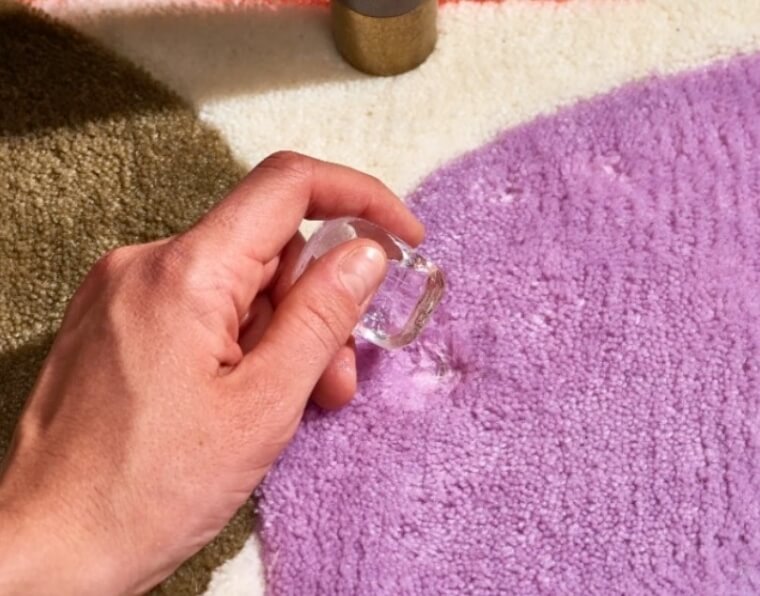
We all take pride in our home decor, particularly our carpets, as selecting the right ones requires considerable thought and decision-making. Therefore, seeing dents in the carpet from furniture can be disheartening. However, you don’t have to worry too much because this issue can be resolved effectively.
To remove the dents from the carpet, place some ice cubes on the affected areas and allow them to melt. Afterward, absorb the excess water with a cloth and use a toothbrush to smooth out the carpet.
Utilize a Microphone to Detect Concealed Wires
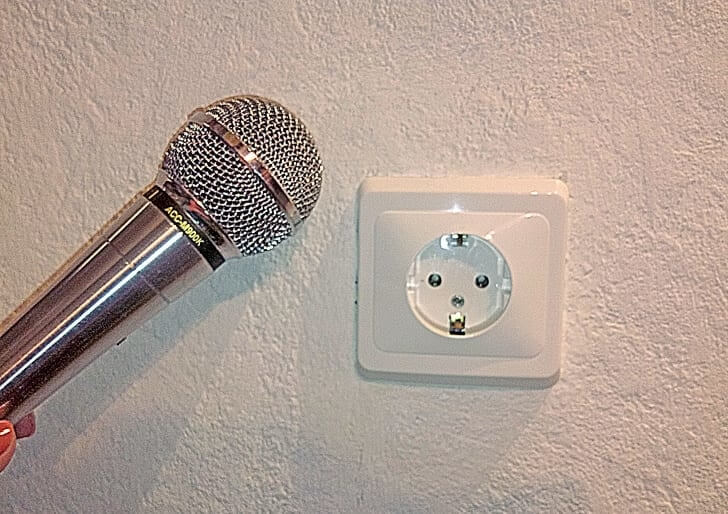
When doing drilling work in your home, be careful of hidden wires, as they can lead to shocks and electrocution. To prevent this, there’s an easy trick you can use to detect hidden wires and avoid electric shocks. You’ll need a working microphone for this.
Connect your microphone to a tape recorder to locate hidden wires in a wall. As you move the microphone near a certain area and the tape recorder begins to hum, it indicates the presence of hidden wires. This way, you’ll know where to avoid drilling.
It seems you’ve sent a blank message. Could you please provide the text you would like me to rephrase?
Keep Your Paint Brushes Fresh With a Plastic Bag
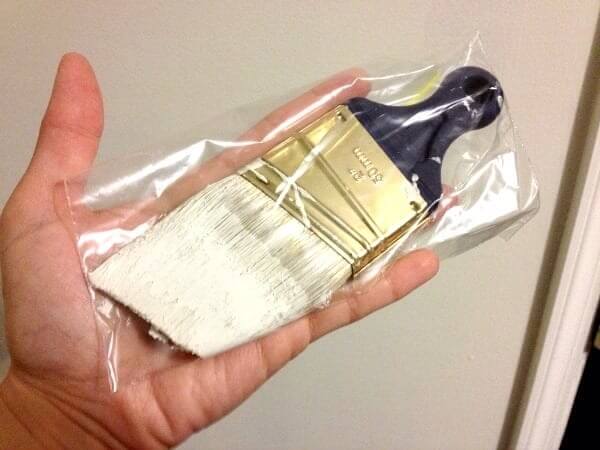
If you enjoy painting walls, your paintbrushes are your most valuable tool, which you need to maintain and care for. If paint is left on the brush, it can harden, making it difficult to use again. That’s why you should use this home repair tip to keep your brushes in great condition.
After you finish using your paintbrush, place it in an airtight plastic bag. The next time you take the paintbrush out of the bag, it will be nice and soft, allowing you to paint easily and perfectly.
Of course! Please provide the text you would like me to rephrase.
A Potato Can Help You Unscrew a Broken Light bulb
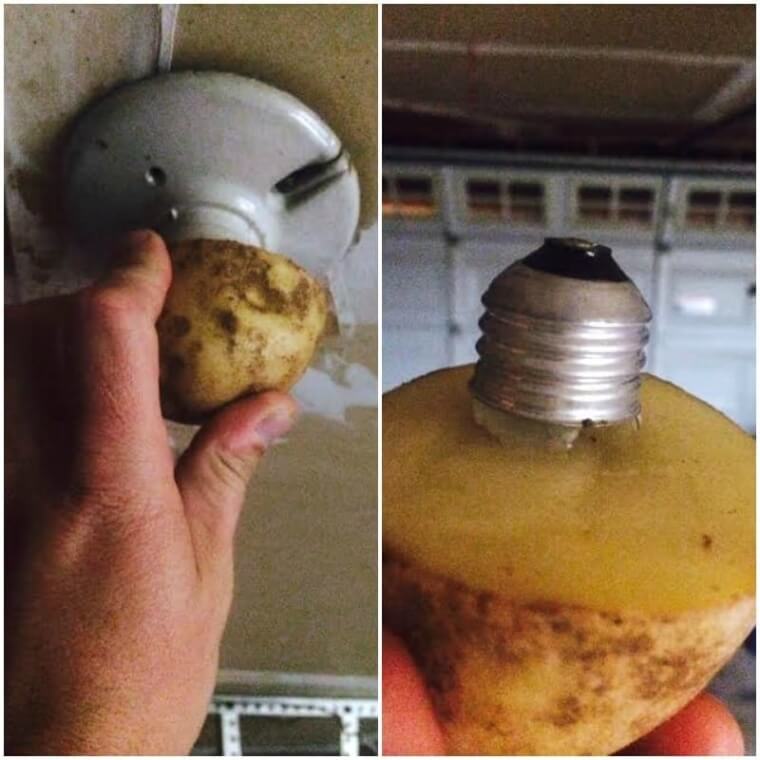
Removing a socket from a broken light bulb can be quite difficult. If not done correctly, you risk the bulb shattering in your hands, which can cause injury. This is where our home repair tip using a potato can help.
Cut a potato in half and insert the soft side into the broken light bulb. Turn the potato counter-clockwise to remove the damaged part quickly. Potatoes have uses beyond just being food.
Diagnose a Leaking Toilet Using Kool-Aid
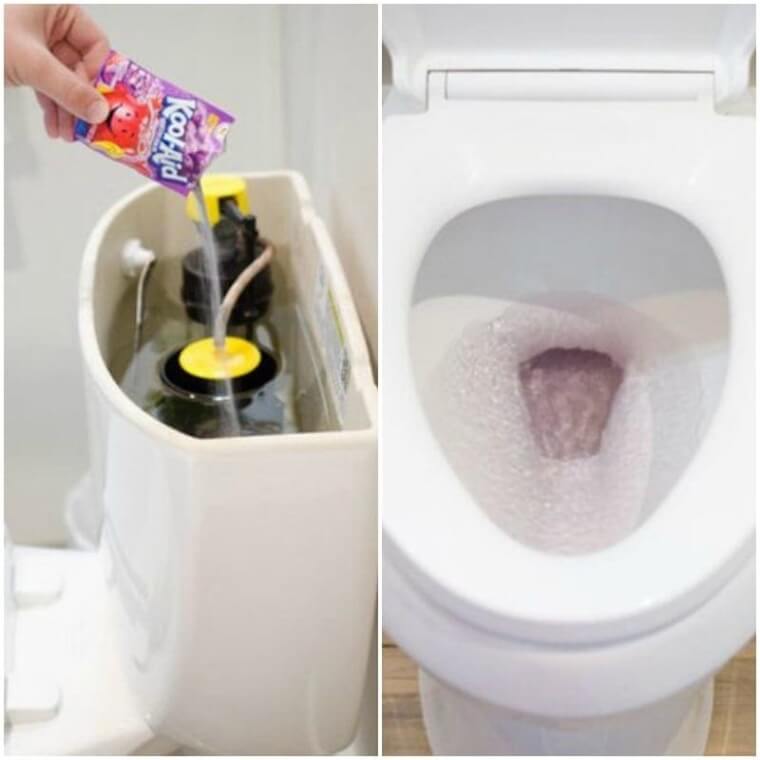
Fixing a leaking toilet can be challenging, as you may either need to hire a plumber at a high cost or spend hours attempting the repair on your own. Yet, if you want to conserve time, effort, and money, you can identify the problem yourself. Simply purchase a dark-colored Kool-Aid for this task.
Pour the Kool-Aid into your toilet tank and wait for 30 minutes. Then, check the toilet bowl. If the water is colored, it indicates a leak; if it’s clear, your toilet is in good condition.
Use Coins to Widen a Bolt That Is Too Narrow
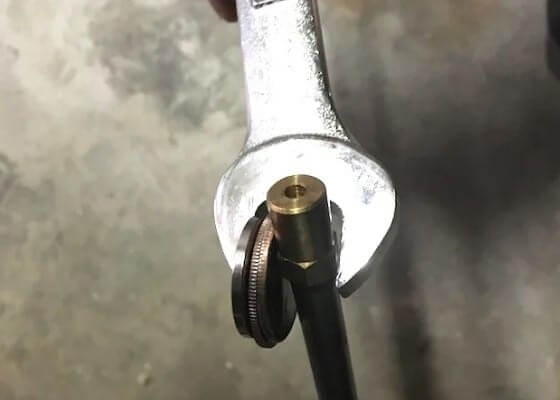
Whenever we need a bolt for a task, we often can’t find one in the right size at home. However, if the bolt is too large, you can modify it to fit your needs at that moment. You just need some coins, which we’re sure you have around.
So, take a few coins, place them in the gap between the bolt and the wrench, and fill it up as needed. This will eliminate any extra space, allowing you to get your work done quickly. It’s one of the best home repair hacks for bolts.
Locate Nail Holes Using Magnets
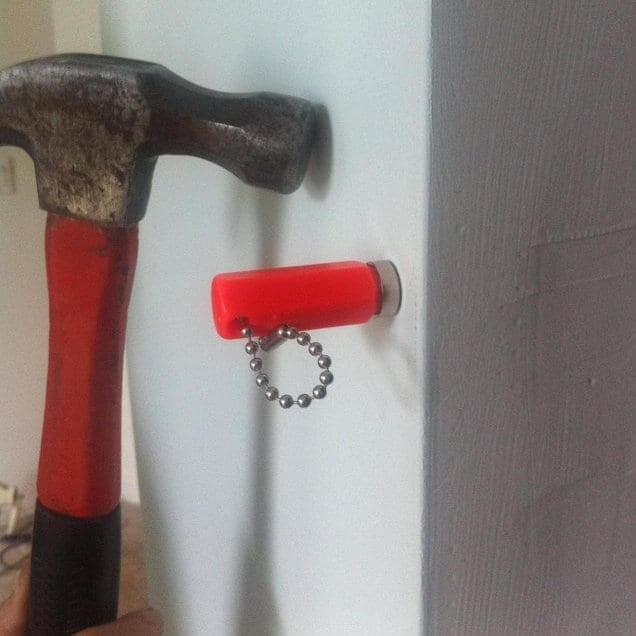
We enjoy rearranging things at home for some variety and change. For instance, you might remove some pictures or artwork, but later decide to hang them back in the same spot. However, it can be difficult to locate the nail holes to reinstall the frame in the same place.
If that occurs, you can always use magnets to find the nail holes. Instead of drilling new holes, you can use a magnet to locate the existing ones. When you’re ready to hang your frames again, you won’t have to spend hours searching for the right holes.
Certainly! Please provide the text you would like me to rephrase.
Unclog Spray Cans with Gasoline
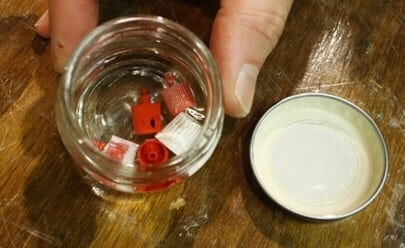
You may already be aware, but companies that mass-produce products often use a strategy known as planned obsolescence to shorten the lifespan of their products, encouraging repeated purchases. A classic example of this is a spray can. You can hear a substance inside, but it won’t dispense.
To fix this problem, you can soak the nozzle of the spray can in gasoline for at least fifteen minutes. This will clear any blockages, allowing you to use your spray can again without any issues.
Use Tape to Assist with Drilling into Tiles
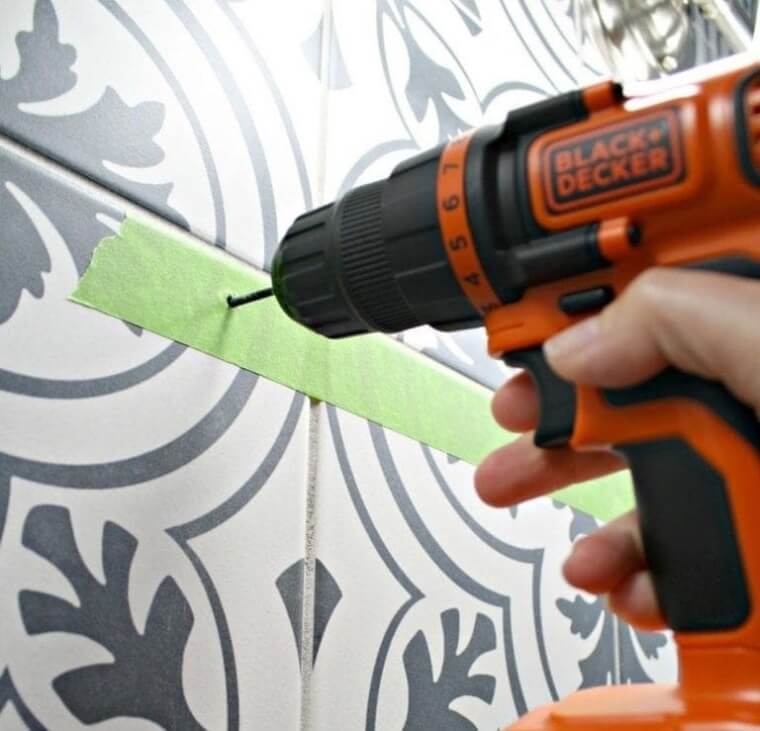
Drilling is consistently challenging due to the risk of injury or damage. This challenge increases when drilling slippery tiles in areas like the kitchen, bathroom, or other parts of your home. If you’re planning to drill tiles, here is a useful tip.
To ensure a slip-resistant drilling experience, you’ll need some tape. First, apply masking tape over the tile, and then drill. This approach will help keep the drill steady and prevent it from slipping out of your hands during use.
Use Cooking Spray to Silence Squeaky Items.
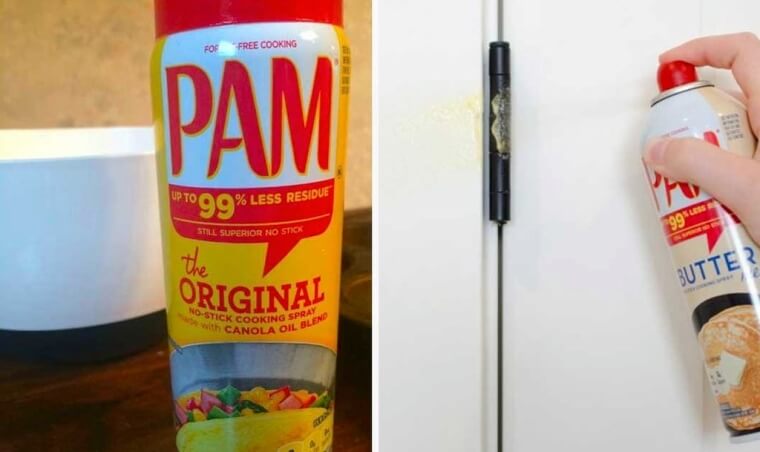
If you’ve lived somewhere for a while, you’ve likely encountered squeaky doors, cabinets, windows, or drawers. If this problem persists, there’s a simple home repair trick to fix it. It only takes a few seconds, so there’s no reason to put it off.
All you need is some cooking spray, which you probably have at home. Just take the can and spray it on the hinges of the squeaky objects. The noise will disappear in seconds, and you can use everything without this issue.
Use a Pool Noodle to Prevent Your Car Door from Hitting the Garage Wall
I’m sorry, but it seems like your message didn’t come through. Could you please resend the text you’d like me to rephrase?
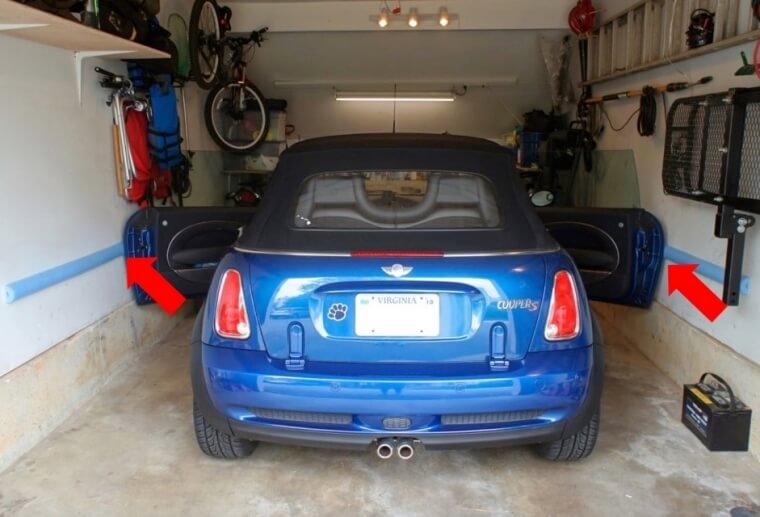
If your home’s garage doesn’t have much space, it’s important to find a way to park your car without causing any damage. This clever trick can help you park in the garage easily. You just need a pool noodle for this.
Simply take a pool noodle and attach it to the wall that makes it hard to open the car door. This way, your car door won’t hit the wall, preventing any damage.
Use Nail Polish to Prevent Rust Circles
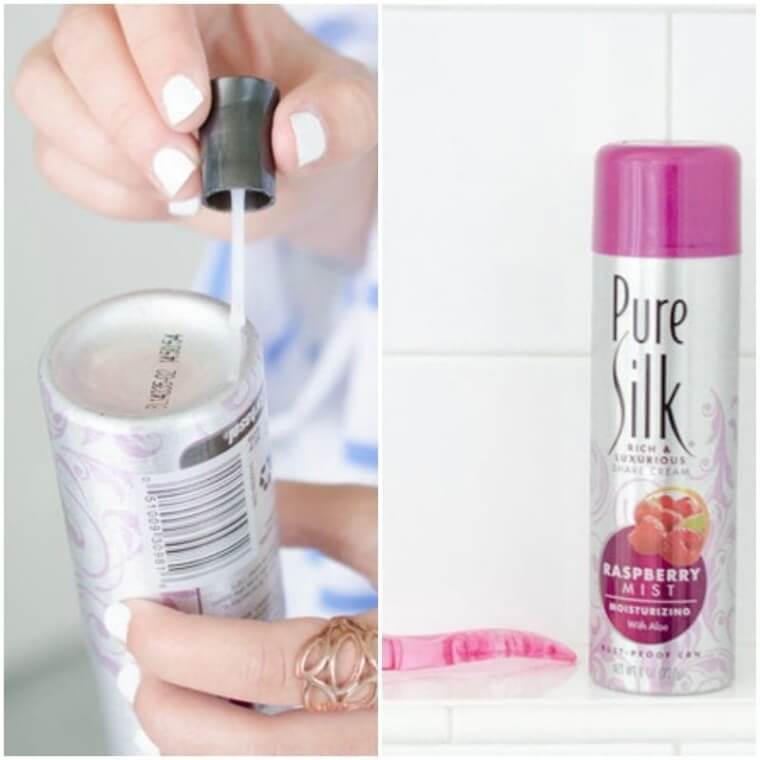
Our homes are filled with metallic containers like spray bottles, deodorant cans, and more. Due to the humidity and moisture in kitchens and bathrooms, these cans can develop rust on the surface. This rust can also transfer onto the surfaces where the containers are placed, so it’s important to eliminate it.
Apply clear nail polish to the bottom of these metallic containers. This will prevent rust from forming, eliminating rust marks on other surfaces.
Certainly! Please provide the text you want me to rephrase.
Use a Plastic Bottle to Prevent a Mess after Drilling
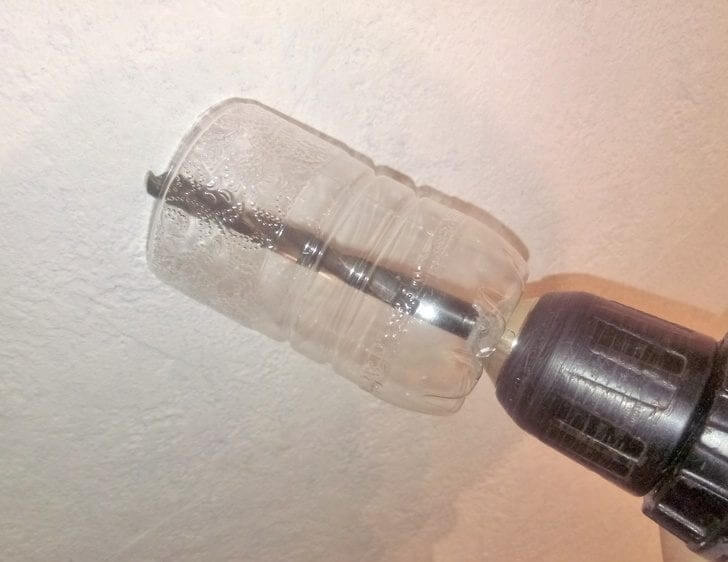
Drilling projects can create a lot of mess in the area, and you’ll need to spend considerable time cleaning up afterward. This is particularly true if you’re drilling in a high location, like a ceiling. If you want to avoid covering the room with sheets, this hack is a great solution.
Simply take a plastic bottle, cut off the top, and attach it to the drill. By doing this, any debris that falls while drilling will collect in the plastic bottle, saving you hours of cleanup later.
Of course! Please provide the text you’d like me to rephrase in English.
Remove Stubborn Screws with a Rubber Band
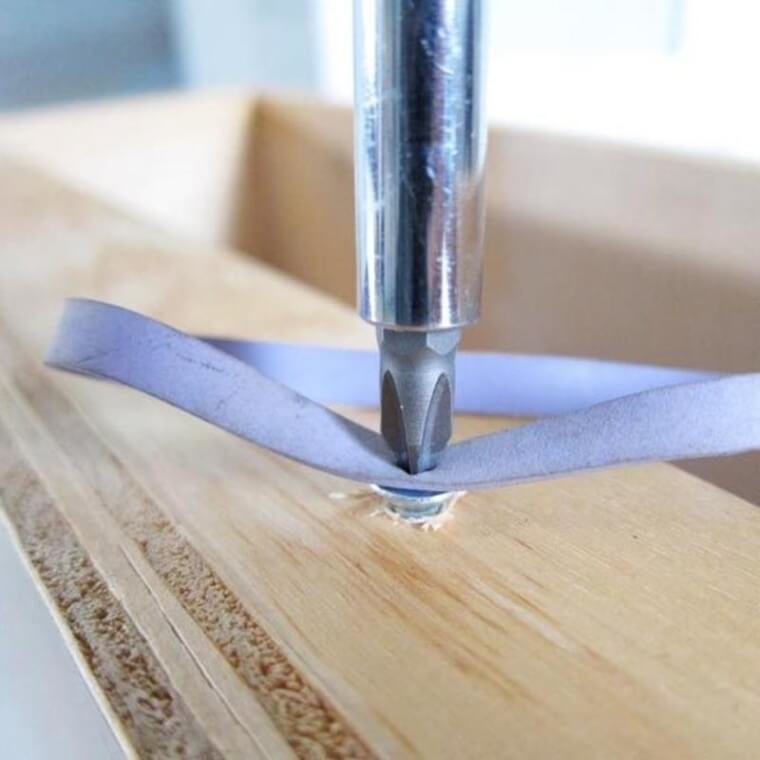
When you’re fully absorbed in a DIY project, securing a strong hold on a screw can be quite difficult. Though anyone can lose their grip, it’s not unavoidable. Our top home repair trick can effortlessly solve this issue, and you’ll really appreciate it.
Place a rubber band between the screw and the screwdriver to gain the necessary grip for smooth work. This is a popular trick among many DIY enthusiasts. It will save you both time and effort in the long term and help avoid injuries.
Certainly! Please provide the text you’d like me to rephrase, and I’ll be happy to help.
Remove Old Wallpaper with a Water-Vinegar Mixture
Old wallpapers can become unsightly as they begin to chip and tear from various spots. To refresh your room, consider replacing the old wallpaper with a new one. However, many people find it challenging to remove the wallpaper cleanly without damaging the wall.
To remove wallpaper seamlessly, mix equal parts of vinegar and hot water thoroughly. Use a roller to apply the mixture onto the old wallpaper. This will soften the wallpaper, allowing it to come off easily and without any problems.
Of course! Please provide the text that you’d like me to rephrase.
Fix Burst or Broken Pipes with a Sealant
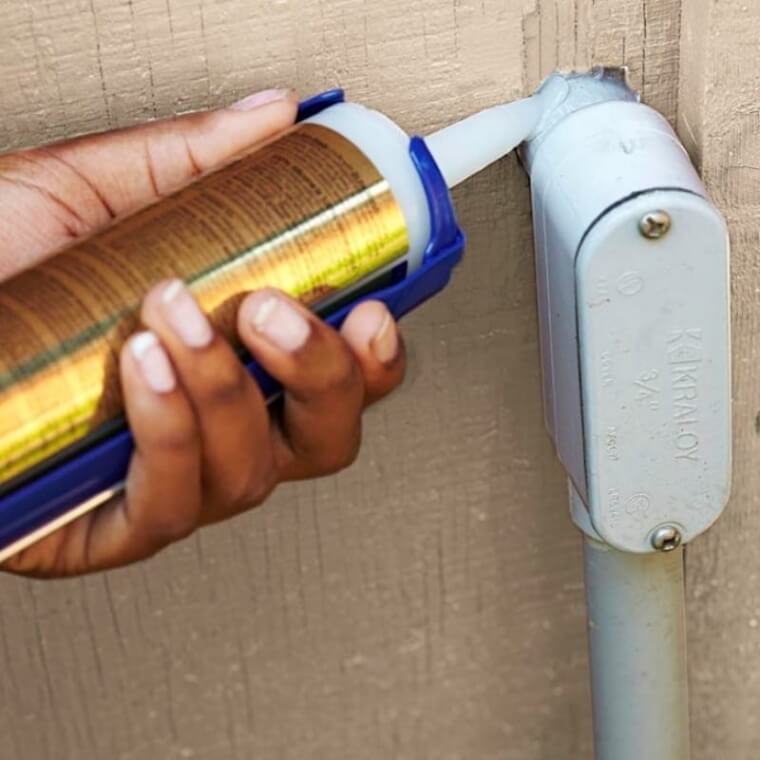
Keep in mind that using a sealant to repair broken pipes is a temporary fix, but it’s the best option for an emergency repair. After addressing the immediate issue, you can always contact a professional to properly repair it, ensuring your home system remains undamaged. This quick fix is simple and only takes a few minutes.
Simply apply some silicone sealant around the hole in the pipe. This will address your problem until you can seek professional assistance for a permanent solution.
I’m here to assist you by rephrasing any text you provide in a different way. Please share the text you would like me to rephrase.
Prevent Doors from Slamming With Cabinet Door Bumpers
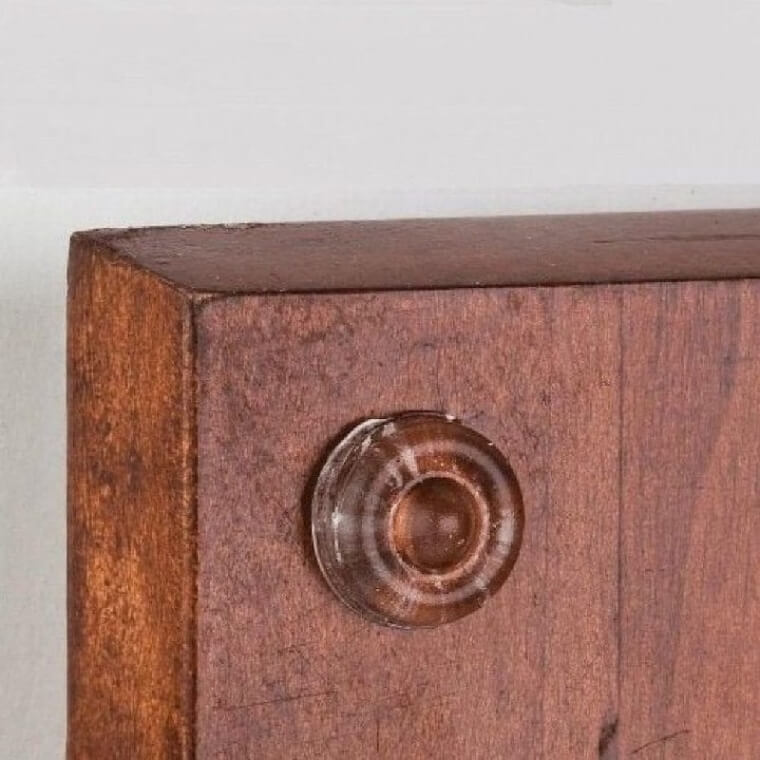
Slamming doors can be extremely irritating in a home, but there’s an effective solution to eliminate this issue permanently. By using cabinet door bumpers, you can quickly address this problem and stop the noise of door slams for good.
Simply take a pack of cabinet door bumpers and apply them to the door. That’s all it takes, and it will cushion the impact, effectively resolving your issue. It’s one of the best quick fixes for slamming doors.
Toothpaste Can Be Used to Remove Unwanted Scratches
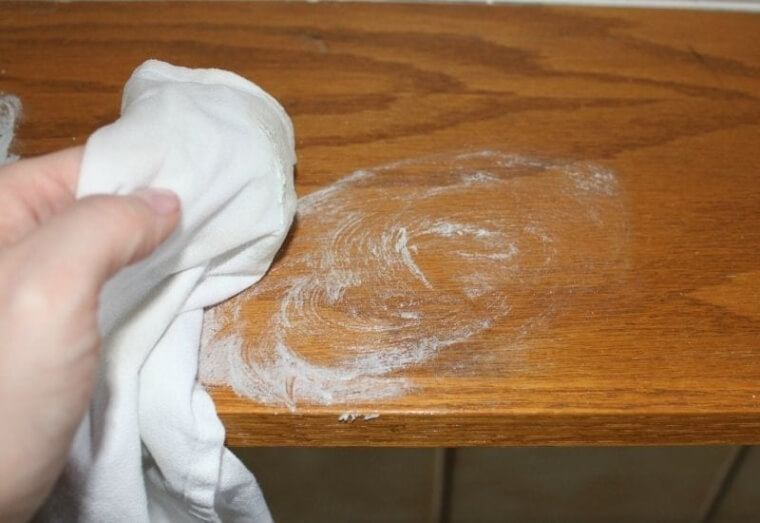
It’s common for anyone with wooden furniture to experience some scratches on their lovely pieces occasionally. However, many people resort to costly solutions to address the issue when they don’t need to. You can also resolve the problem with some toothpaste without spending a lot of money.
Simply apply a small amount of toothpaste to the marks and rub it gently in circular motions with a clean cloth. This will help buff out all the scratches from your wooden furniture, and you won’t have to spend much money resolving this issue. It’s an inexpensive, fast, and effective solution.
Remove dents in wood using an iron.
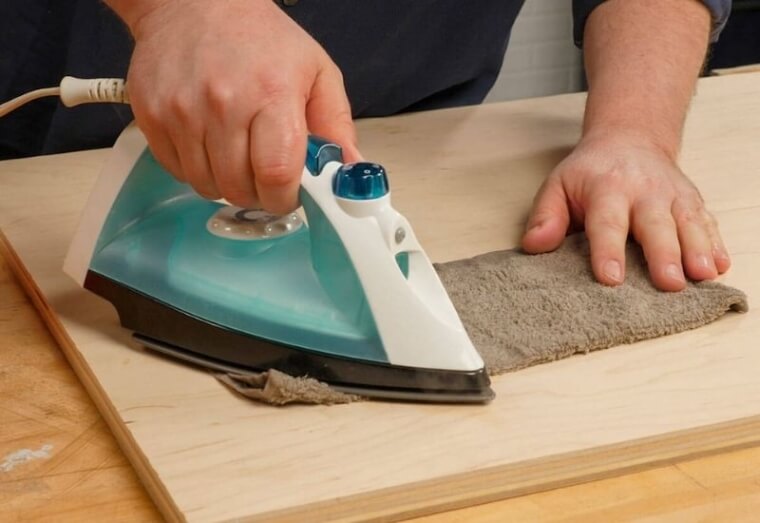
Begin by taking a washcloth, soaking it, and wringing out the excess water to ensure it is just damp. Next, lay the washcloth over the dent. The water will seep into the wood, so don’t be surprised; this is completely normal. Make sure your iron is ready and set to the highest heat setting before putting the damp washcloth in place. Use small circular movements with your iron on the washcloth, and then press it down until the moisture has fully evaporated. Repeat the process until the dent in the wood has expanded back to its original position.
Nail polish can repair minor screen tears.
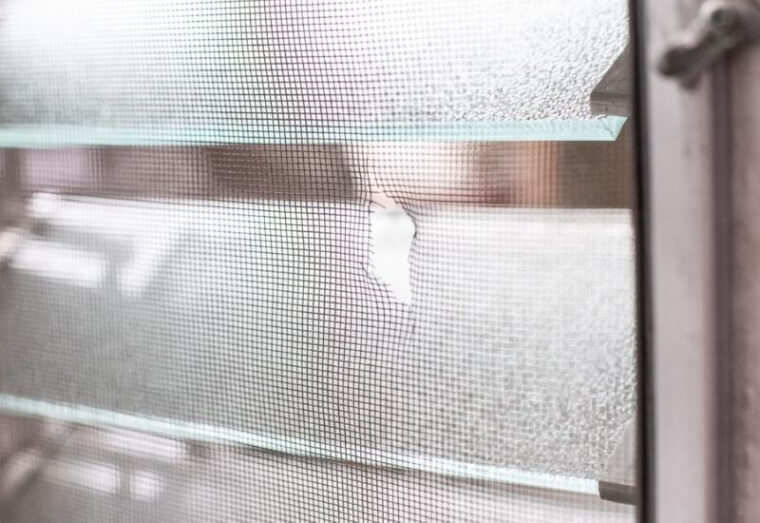
To repair a small tear in your screen, you’ll only need clear nail polish. Begin by cleaning and drying the area with the tear so no impurities are trapped inside. Then, take a thin paintbrush or the nail polish brush and lightly apply a layer of clear nail polish over the tear on the screen. Avoid double-dipping to prevent transferring any pollen or dirt to the polish. Allow the first coat to dry; you can speed up the process by using a hairdryer on the lowest setting. Apply a second coat and let it dry.
Use rubber bands to keep doors from closing.
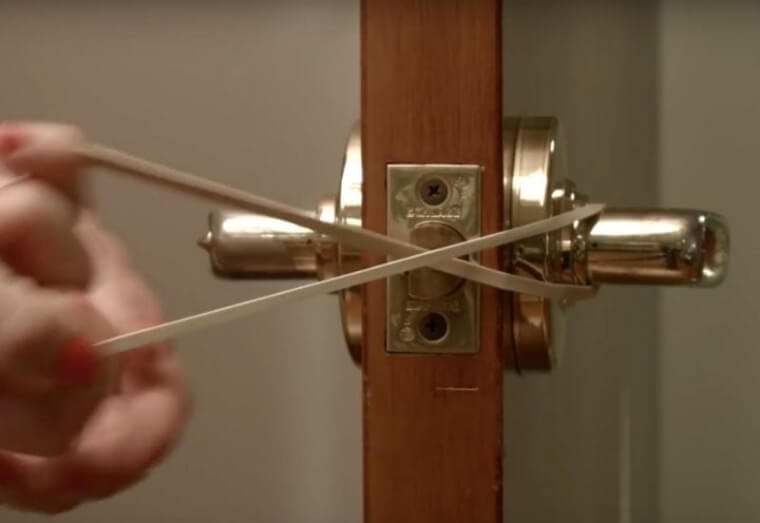
For this to succeed, you’ll need a thick rubber band rather than the standard thin ones. Start by keeping the door open and wrapping the rubber band around the door handle on one side. Then, stretch the rubber band to the handle on the opposite side and apply the same wrapping method. When the rubber band is stretched from one side to the other, make sure it runs both over and under the door’s latch. This creates a cushioning effect, stopping the door from closing. If you don’t have thick rubber bands, you can use several rubber bands to achieve the same effect.
Create a Sprinkler Using a Plastic Bottle
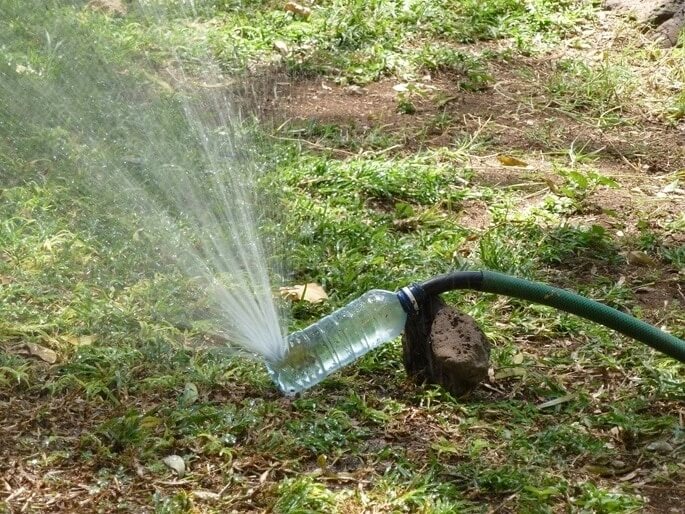
Take a plastic bottle—the larger, the better—and ensure it is thoroughly clean. You can wash out any liquids by placing it under running tap water. Then, take a tool with a sharp point, like a compass or screwdriver, and make about 12 to 14 holes in the bottom of the bottle. After that, connect the bottle’s opening to your hose and use electrical tape to fasten it securely. When you turn the water on, the bottle will fill up, and the water pressure will cause the holes to function like a sprinkler.
The kitchen vegetable peeler can serve as a screwdriver.
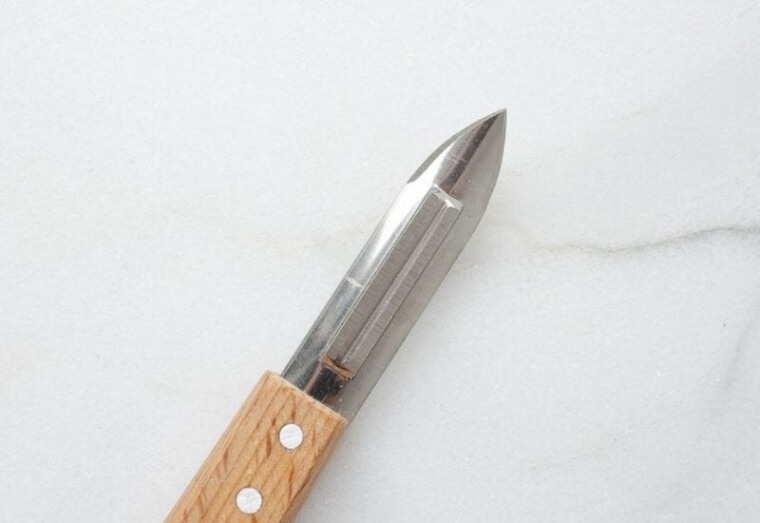
There are multiple tools with diverse applications that you might not have considered previously. One example is the vegetable peeler, frequently located in household kitchens. Many vegetable peelers are equipped with screwdriver heads, serving as an excellent alternative to flathead screwdrivers. However, ensure the vegetable peeler’s handle is robust to prevent any potential injuries. Therefore, next time you need a flathead screwdriver, just check your kitchen.
Sharpen Scissors Using Aluminum Foil
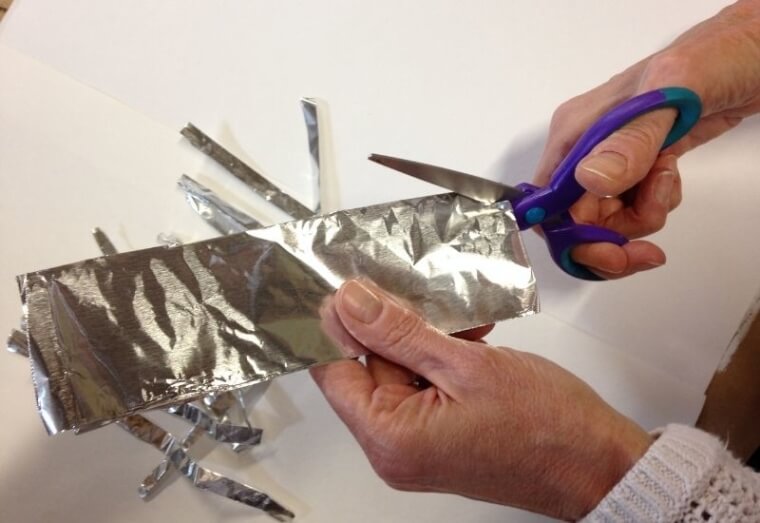
Begin by taking a piece of aluminum foil that is 8 to 10 inches long and fold it lengthwise. Then, use scissors to cut the folded aluminum foil lengthwise as well. Cut the foil into thin strips so that you can make multiple cuts with the same piece of foil. If needed, you can use another piece of folded aluminum foil. Ensure that every part of the scissor blades comes into contact with the foil by using full strokes. After finishing this step, dampen a paper towel with warm water and use it to wipe the scissors to remove any residue.
Use a Standard Pencil to Unjam a Lock
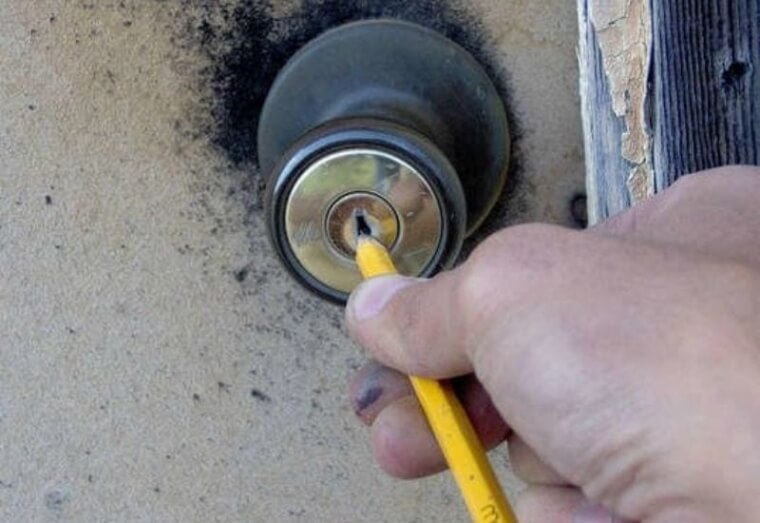
A lock that is stuck generally needs lubrication to get the key working again. However, this should be done with graphite instead of any liquid. At times, finding graphite powder can be difficult when you’re in a hurry. In that case, you can easily use a graphite pencil to lubricate the lock. We advise against inserting the pencil directly into the lock because the tip might break and worsen the problem. Instead, rub the pencil on your key and then insert the key into the lock. Do this a few times and then unlock the stuck lock.
Eliminate Snags in Woven Rugs to Restore Their New Appearance
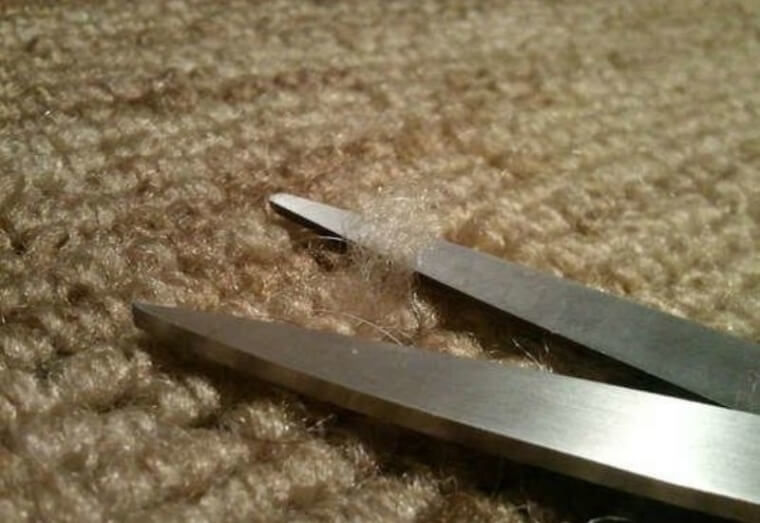
When eliminating snags from your rug, make sure that any piece you plan to cut with scissors is at least half an inch long to prevent harming the rug. Once you locate the snags, position the scissors completely parallel to the rug and clip the snag. Then, tuck the cut ends into the surrounding fibers. You can apply a small amount of hot glue to secure the ends in place and conceal them. For significantly longer snags, place masking tape on each side of the snag to create a trench, then proceed with cutting and gluing.
Unclog Blocked Drains Using Zip Ties
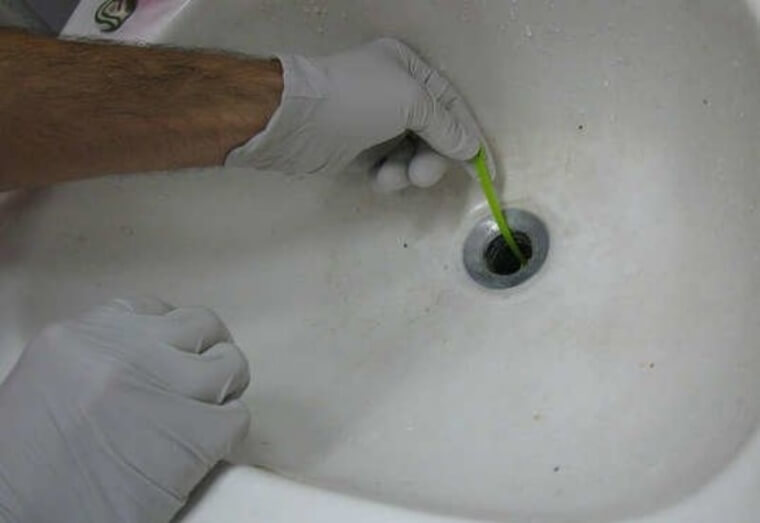
To do this, you’ll need a wire cutter and several zip ties. If the zip ties are short, you can extend their length by connecting two zip ties together. Continue connecting the zip ties until they form one long tool that can easily reach down to unclog the drain. Use the wire cutter to make diagonal cuts halfway through the zip ties, ensuring these cuts face downward and alternate each cut. Then, grab the cut tip and bend it outward to create a barb. Insert this elongated tool into the drain and move it in circular and vertical motions to extract the debris. Pull it out and repeat the process until all the debris is removed.
Utilize Cat Litter to Eliminate Oil Stains
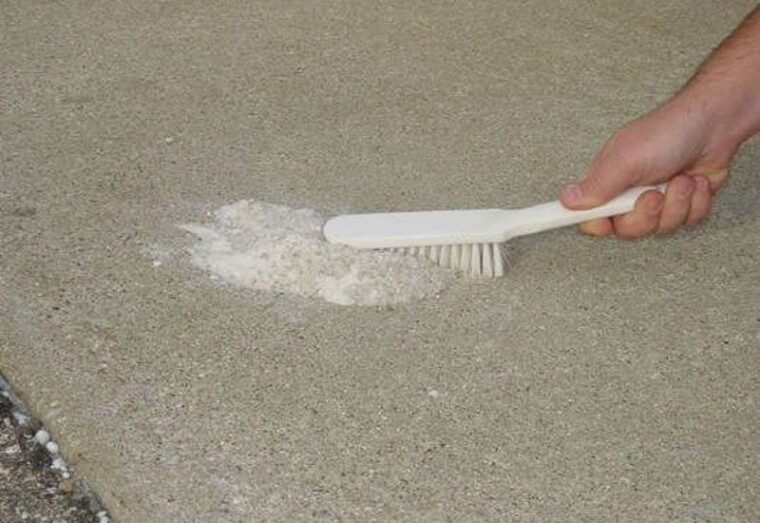
If a new oil stain has appeared on your driveway, don’t wait for it to set; immediately grab some cat litter and get to work. First, cover the entire oil stain with a layer of cat litter and let it sit for at least 30 minutes. If the stain isn’t very large, 30 minutes should suffice. Consider leaving the cat litter on the oil stain overnight if the stain is substantial. Next, sweep it up and get some detergent and a bristle brush. Start scrubbing the detergent over the oil stain while applying pressure. Rinse off the detergent using water. Repeat the entire process if necessary.
Use tape to measure the depth of holes.
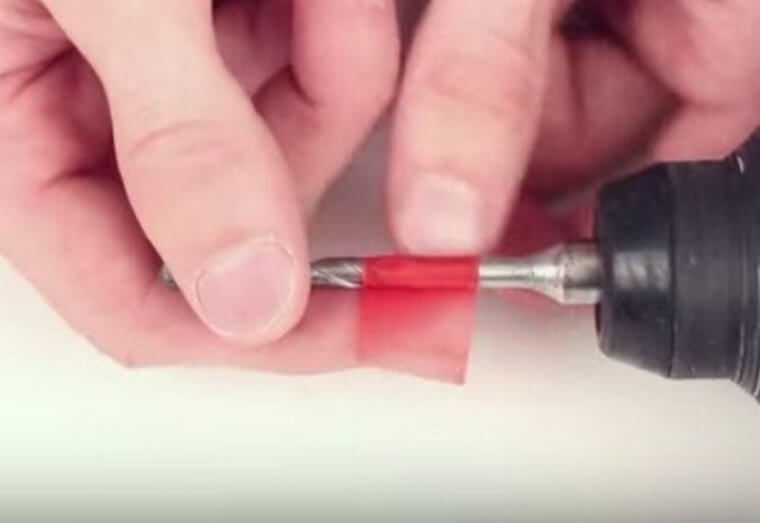
To measure the depth of holes with tape, you’ll need masking tape and a drill bit or machine. Cut a long piece of masking tape and apply it around the drill bit, leaving some room for the drill bit to penetrate the material. Ensure that the masking tape around the drill bit is thick enough to detect when it touches the material. After creating the hole, measure the length from the tip of the drill to where the masking tape starts.
Utilize a small magnet to hold nails securely in position.
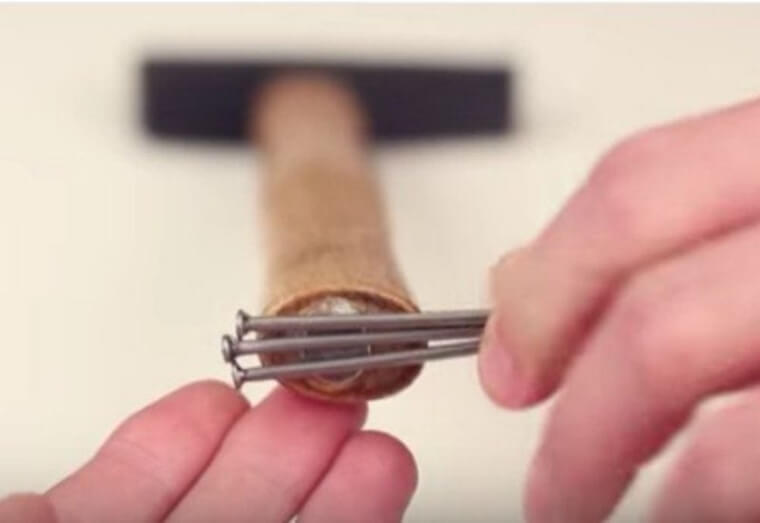
When trying to hammer nails to hang something, people often have difficulty holding both the hammer and nails at the same time, which is why you might see them holding nails in their mouths. This can be quite hazardous. An effective way to keep nails on hand is to attach a small magnet to the bottom of your hammer. This technique works best with hammers that have wooden handles. Start by drilling a small cavity at the hammer’s bottom, just wide enough for a small magnet. Then, apply a small amount of super glue into the cavity and carefully place the magnet inside. Once the magnet is secure, you’re all set.
Use foil to line your trays before painting them.
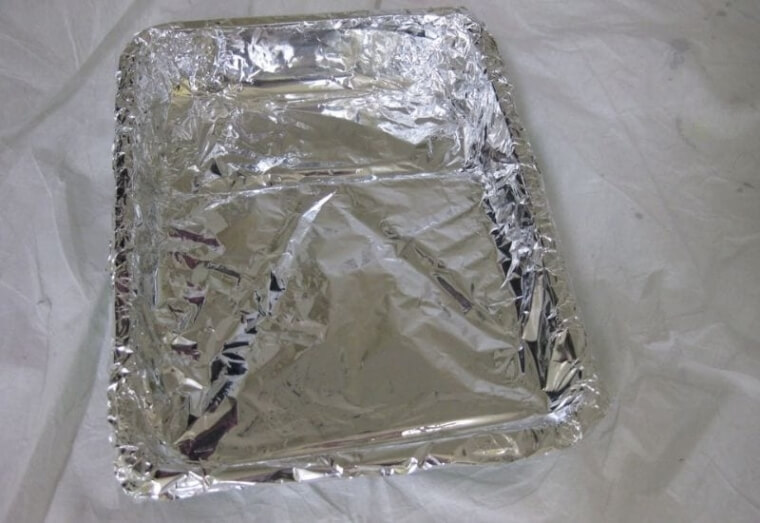
When painting your walls with a roller, a useful tip is to line your paint tray with aluminum foil. This makes cleaning up much simpler because the paint will dry on the foil instead of the tray itself. Thus, the foil serves as an excellent and effective paint tray liner. Begin by cutting a piece of aluminum foil that is a few inches larger than your tray. Lay it over the tray and press it down so that the foil fits the shape of the tray. To keep it in place, fold the extra foil over the outer edge of the tray.
Use a Few Rubber Bands to Remove Excess Paint
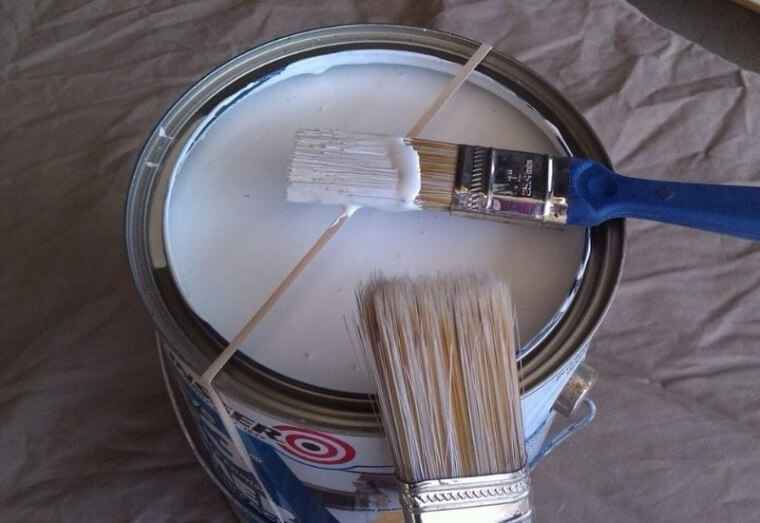
While working on a painting project, ensure that you have some thick and long rubber bands nearby. These rubber bands can assist you in removing extra paint from your paintbrush, allowing it to drip back into the paint can. Take a rubber band and stretch it around the paint can, starting at the top and carefully wrapping it to the bottom. Perform this step carefully to avoid any spills from the paint can. Then, take the paintbrush you want to clean of excess paint and wipe it against the rubber band.
Silence Noisy Pipes by Shutting Off the Water
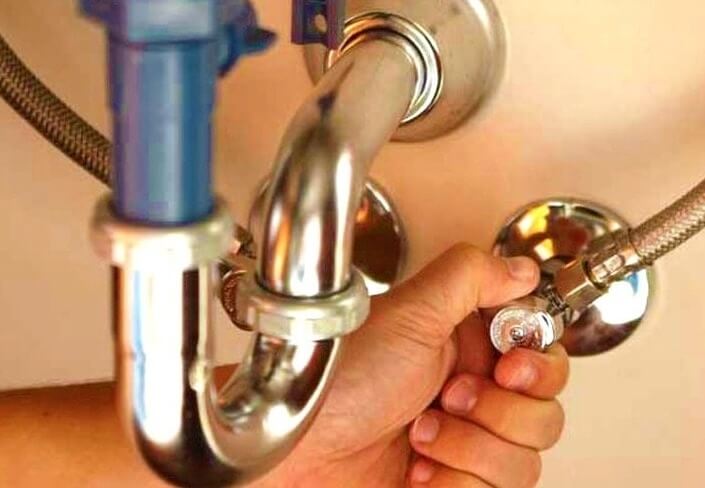
If you’re having trouble with consistently noisy and disruptive pipes, we have a good temporary fix. Noisy pipes shouldn’t be underestimated, as they can disturb the peace in your home and affect your ability to concentrate. It can also be a significant issue when trying to sleep. The challenge comes in identifying exactly which pipe is causing the problem. A useful way to address this is to turn off your home’s main water supply when you know the water won’t be needed.
Unclog a Toilet Using Liquid Soap and Water
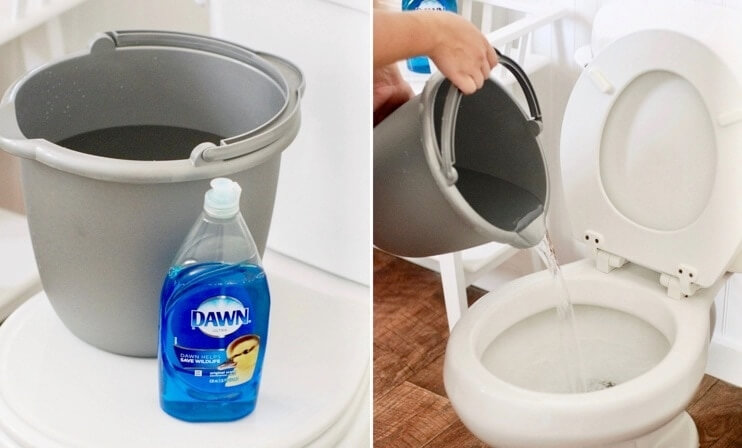
Begin by measuring out a gallon of water and placing it over the stove to heat. Before it reaches a boil, add your liquid soap. Once the water is significantly hot, remove it from the heat and carefully pour it into your clogged toilet. Ensure the water is taken off the heat before it boils. Wait about 10 to 15 minutes for the hot water and soap mixture to soften the clog in your toilet. Finally, flush to make sure the pipe is fully clear.
Design Your Gallery Wall Using Newspapers
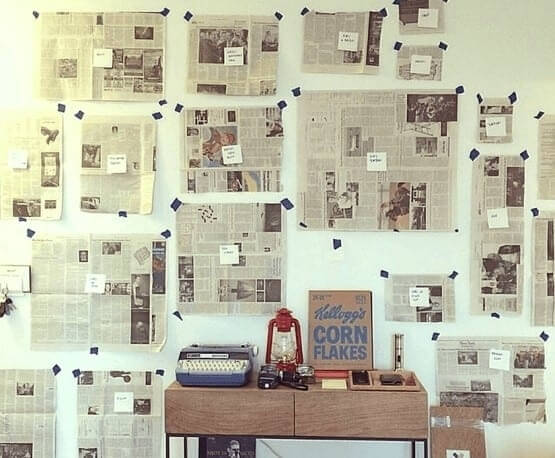
Using a newspaper, you can effortlessly organize the layout of your gallery wall and develop a template to ensure your plan meets your satisfaction. Begin by positioning a frame over the newspaper and tracing its outline with a black marker. Remove the frame, cut out the shape you traced, and label it with a number assigned to that specific frame. After completing this step for each frame, use painter’s tape to affix the newspaper cutouts onto the wall. The painter’s tape allows you to remove the newspaper without harming the paint on the wall.
Utilize plastic tubes to eliminate the noise generated by fan chains
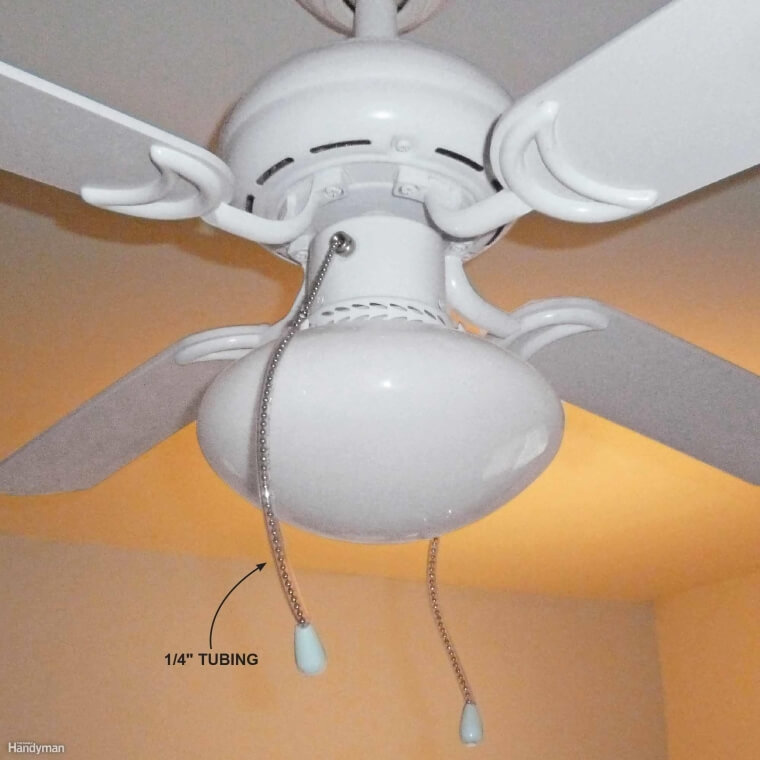
The alignment of your fan doesn’t need to be perfect; the airflow generated by the fan can cause the pull chains to hit the fan, producing a very annoying noise. You can fix this problem and stop the noise by using a plastic tube. Start by turning off the fan and gently removing the pull chains. Take a plastic tube with a diameter of a quarter of an inch and thread the chains through it. Finally, reattach the chains to the fan and enjoy noise-free airflow.
Use Rope to Quiet Water Drips in Gutters
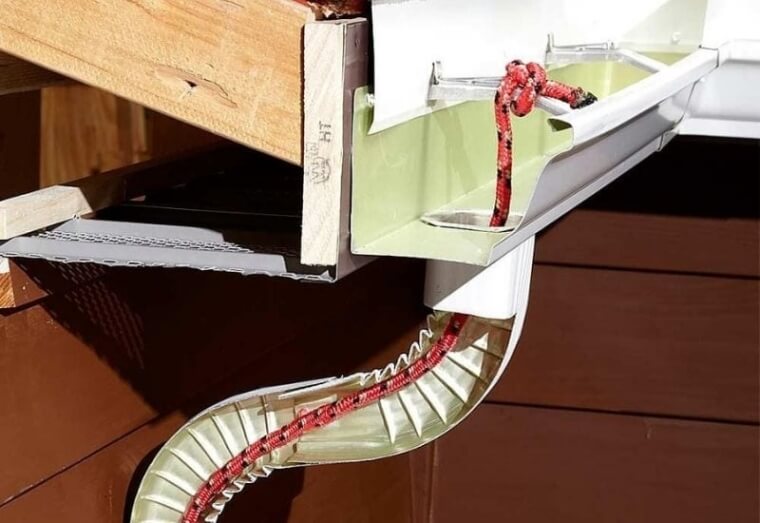
Noisy gutters can quickly become bothersome. This noise is usually due to water dripping inside, which can be easily fixed by using a nylon rope. Begin by attaching one end of the nylon rope to the top of the gutter’s downspout and let it run down. The rope provides a path for the water to follow, which stops the noise caused by dripping water. Then, place a sponge in the corners of the downspout to absorb any drips.
Unclog the Sink with a Mixture of Baking Soda and Vinegar
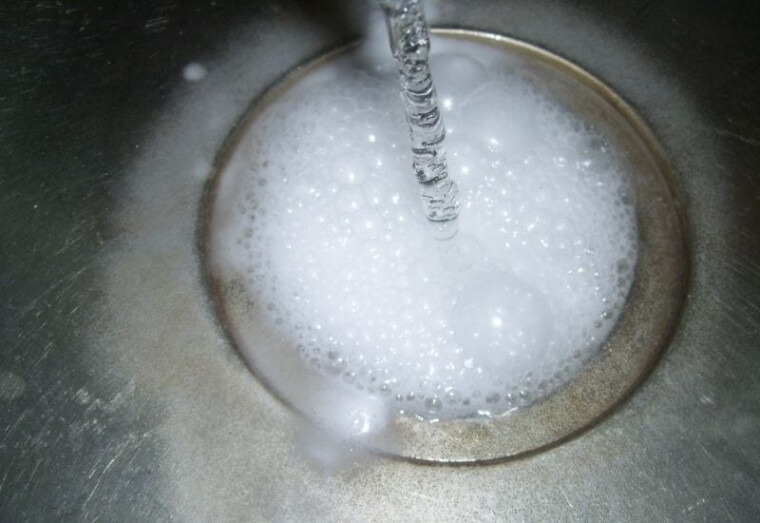
A mixture of baking soda and vinegar is an effective method for cleaning a blocked sink, and these ingredients are usually found in most kitchens. Begin by boiling some water and pouring it down the sink. Next, mix together one cup of baking soda and one cup of vinegar to make a solution totaling two cups. Pour this mixture into the drain and cover the sink’s drain. Let it sit for 5 to 10 minutes. During this time, boil more water. After the waiting period is over and the water is boiling, pour it into the drain. This will create a bubbling reaction that helps clear the blockage.

